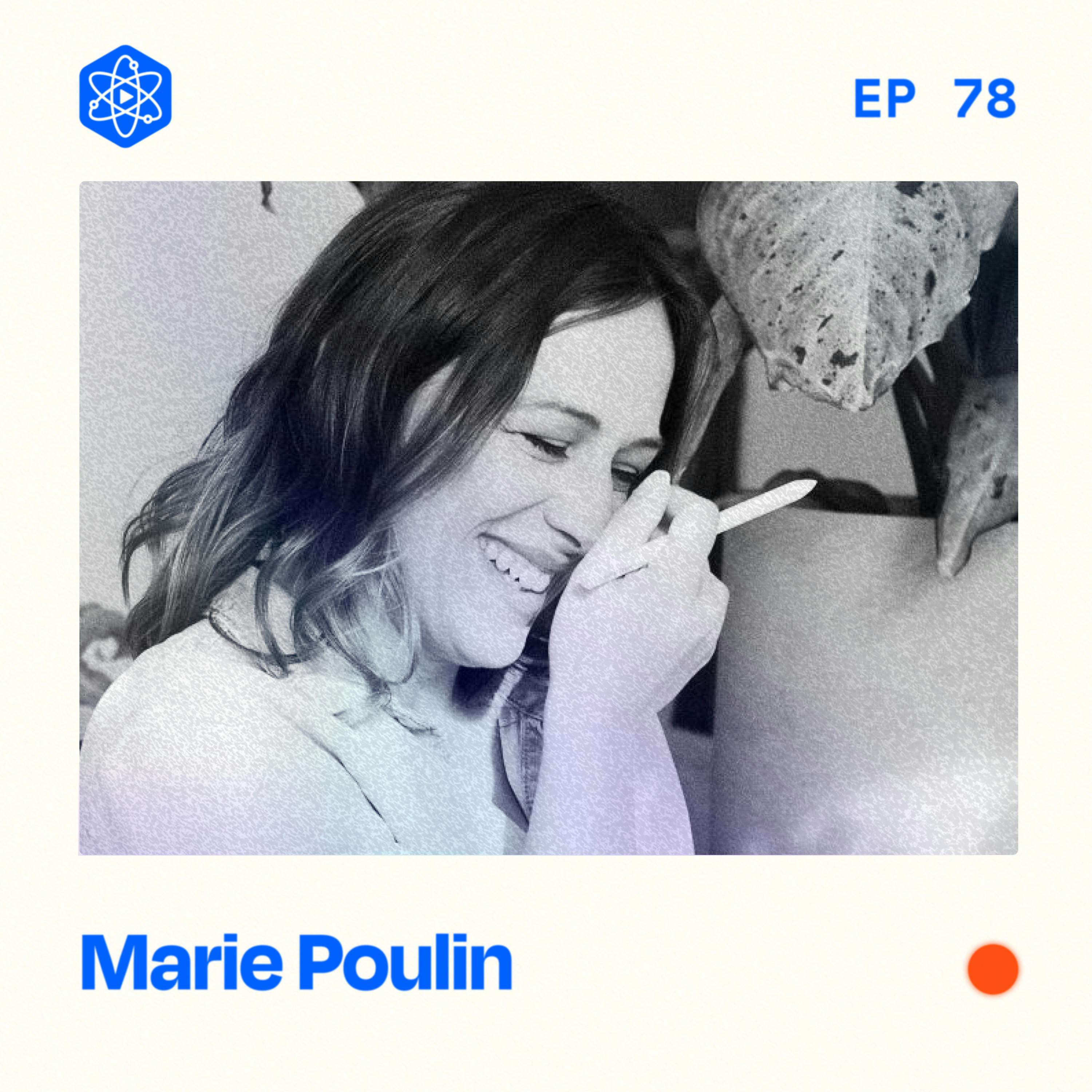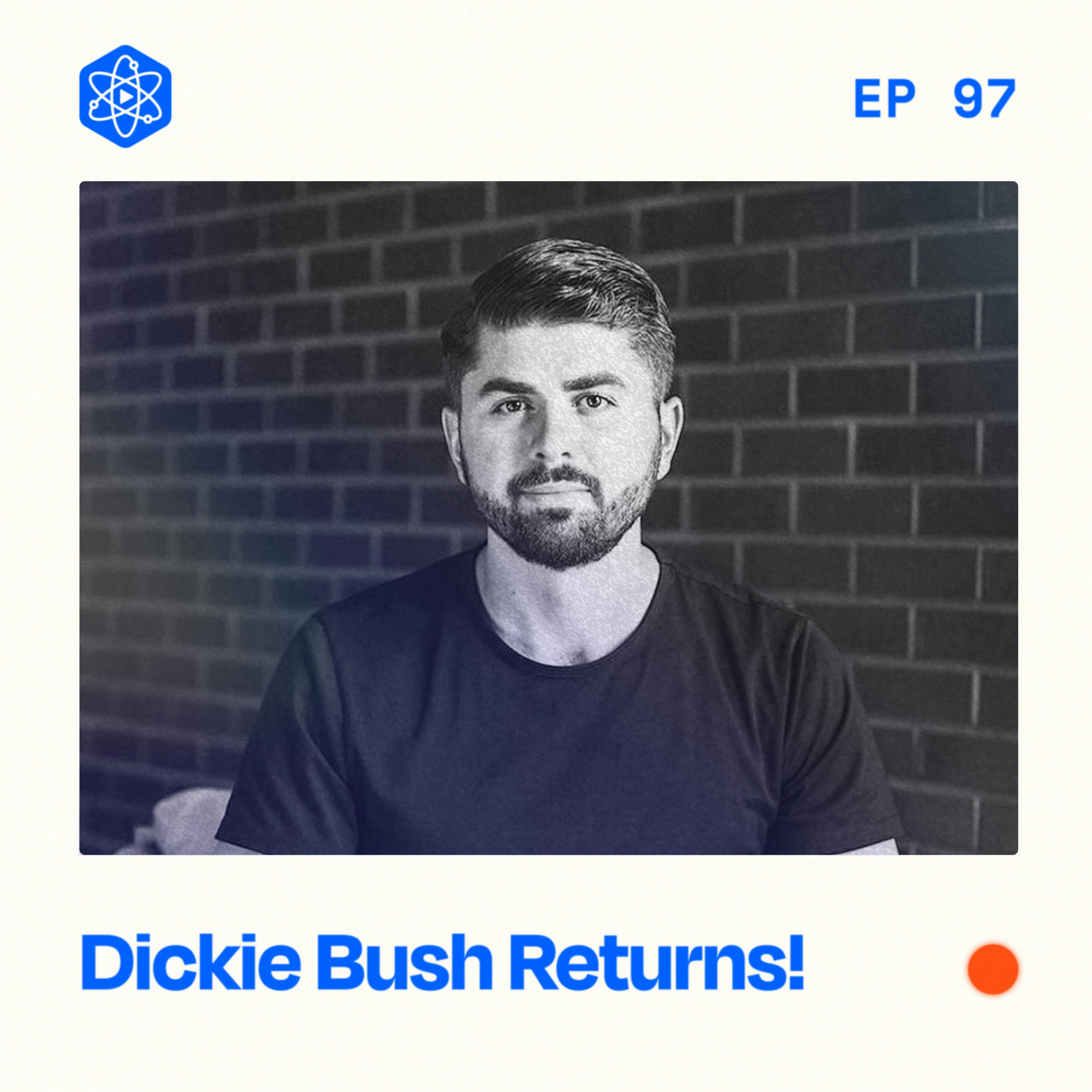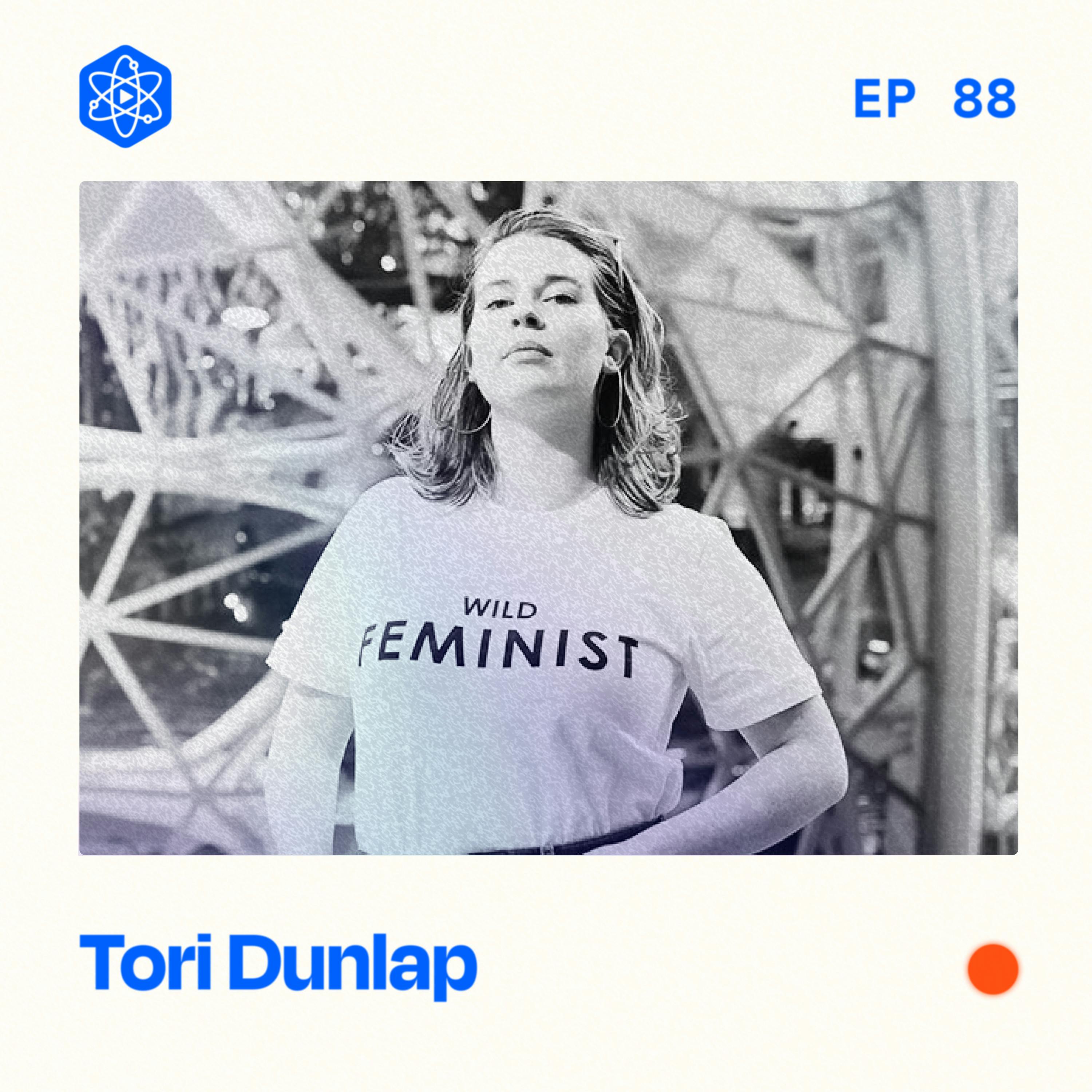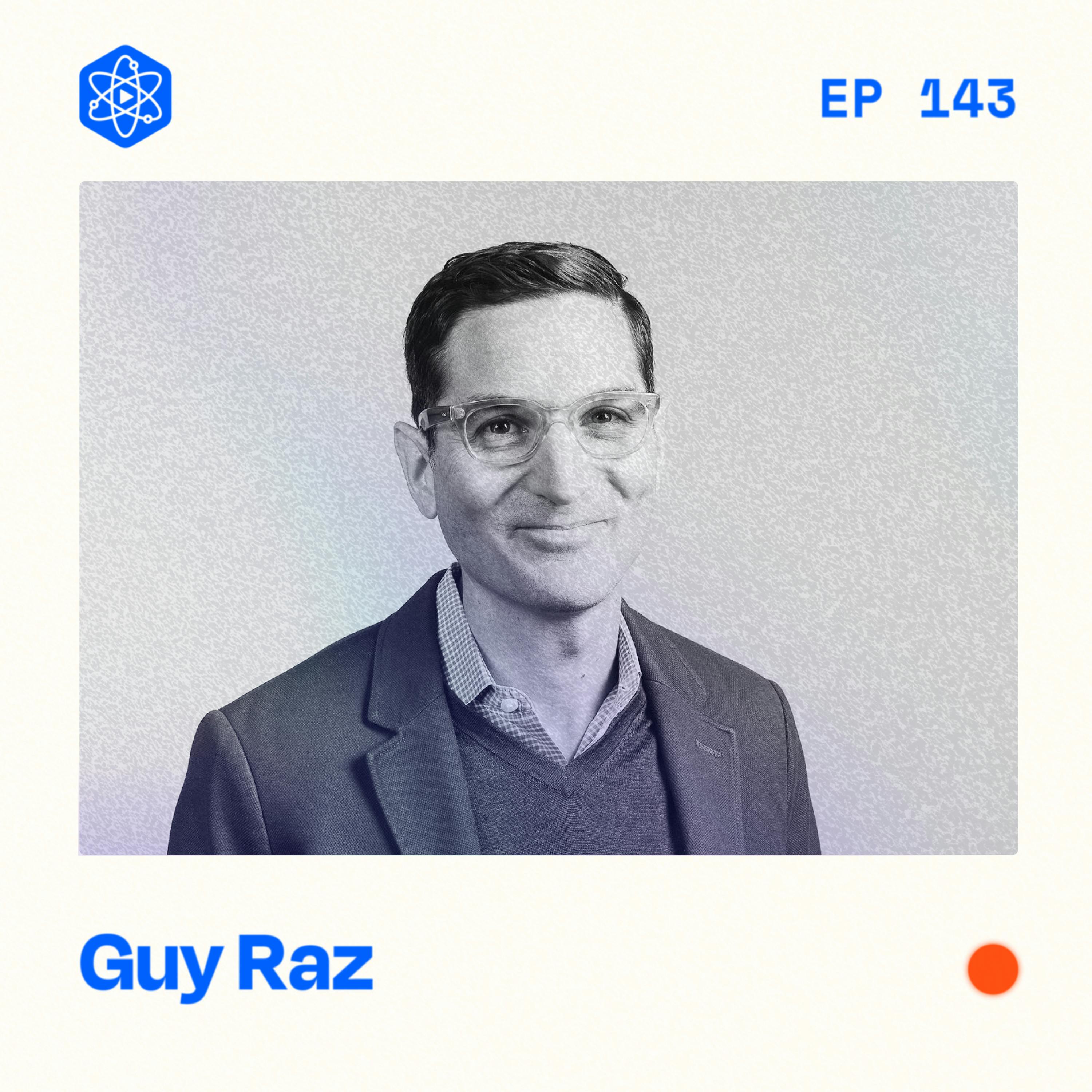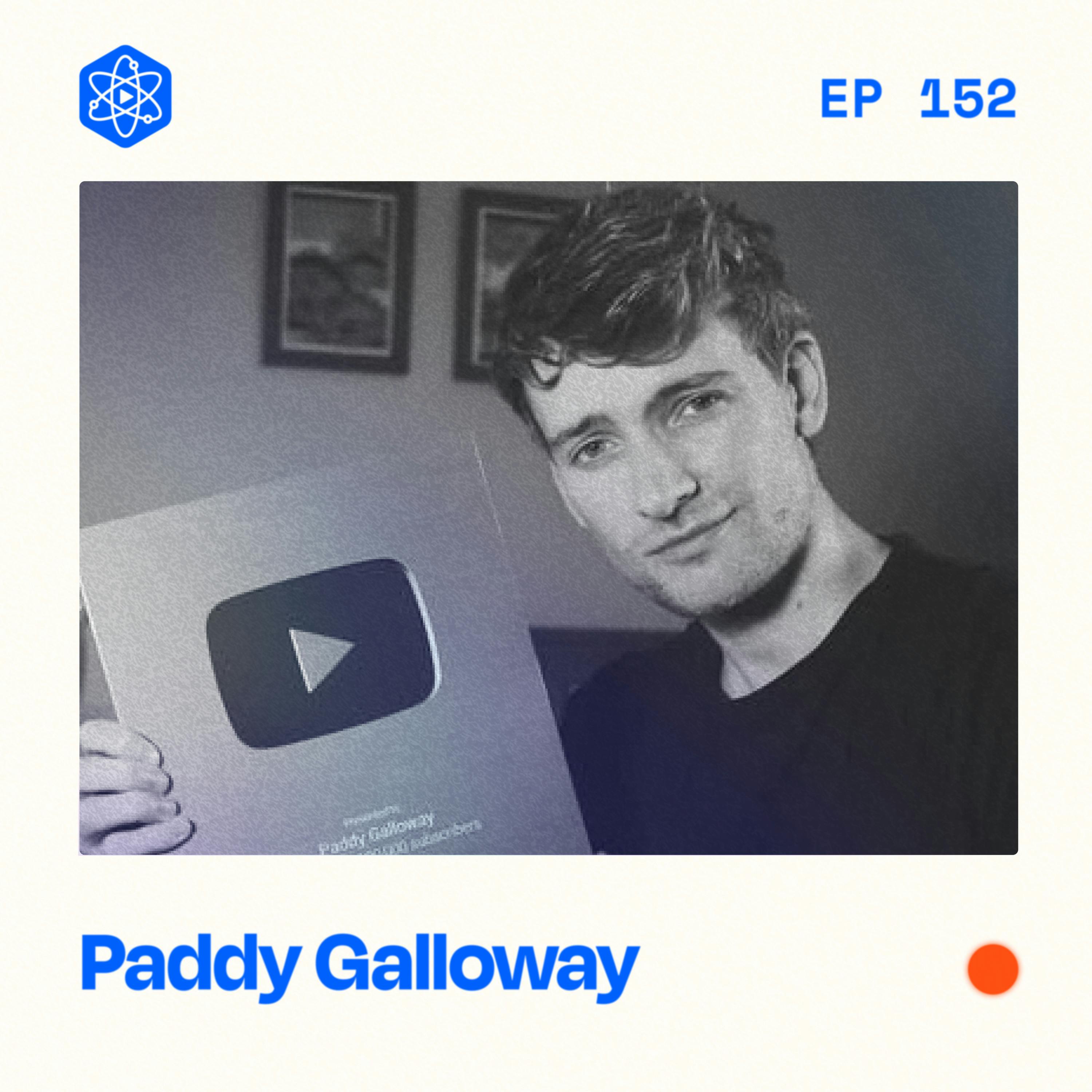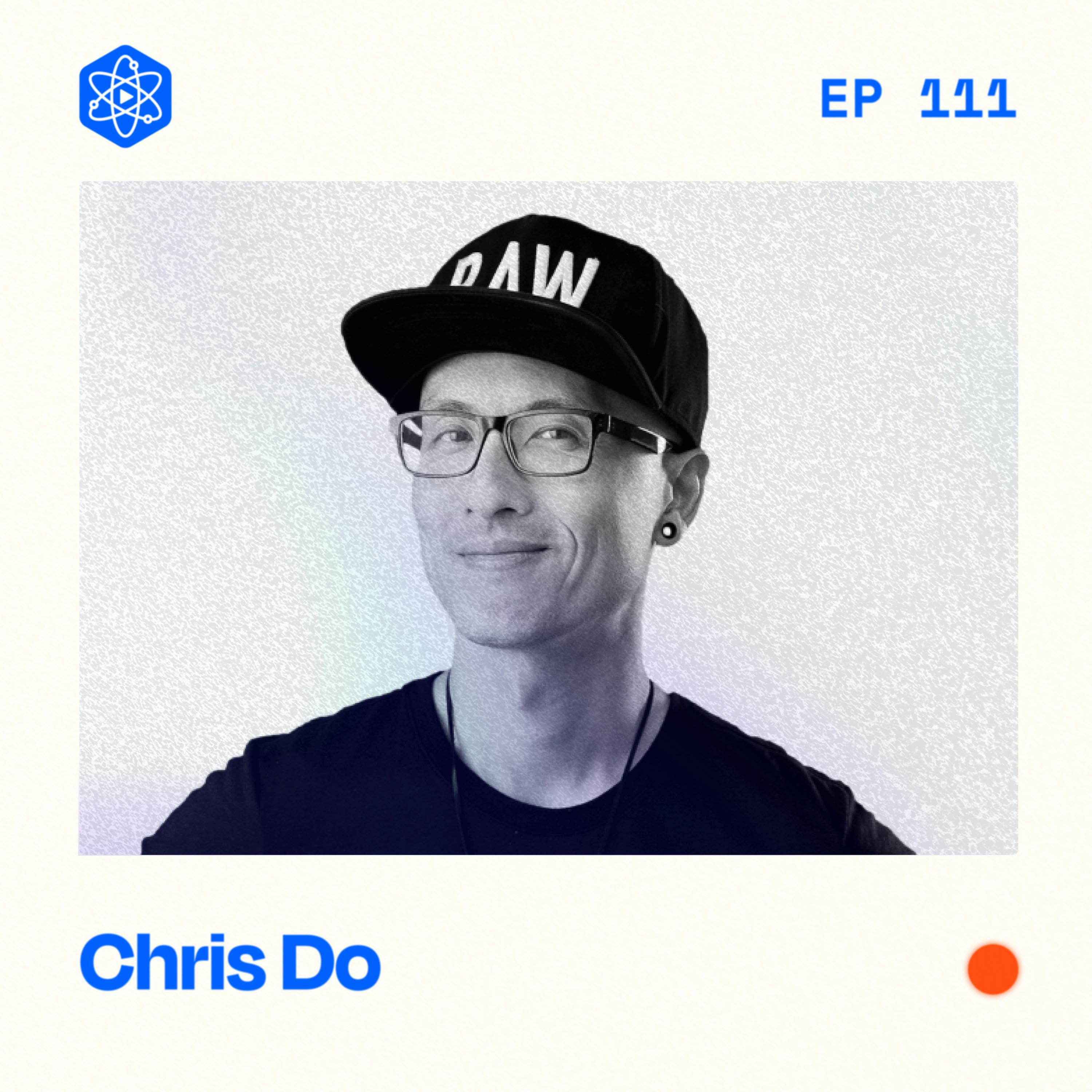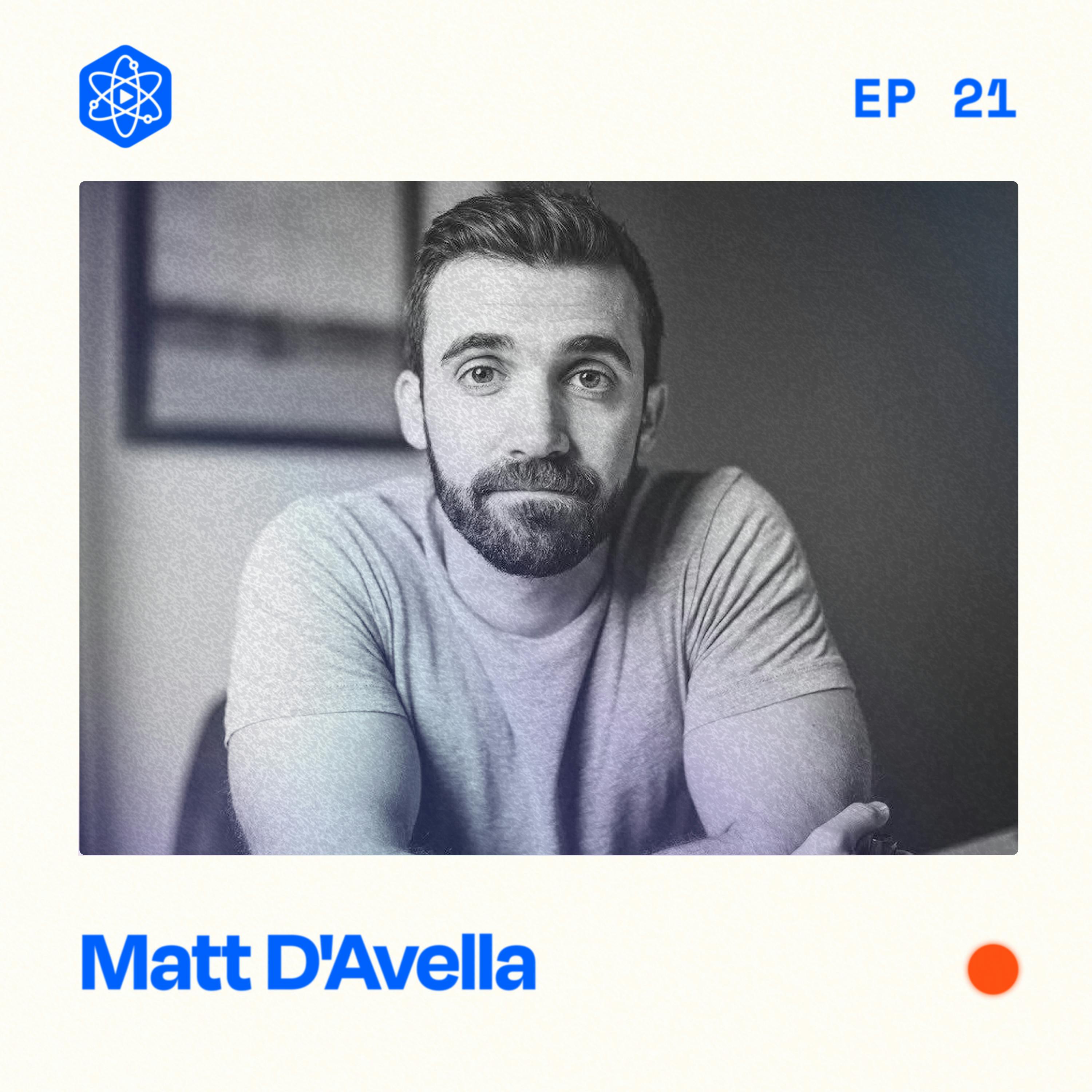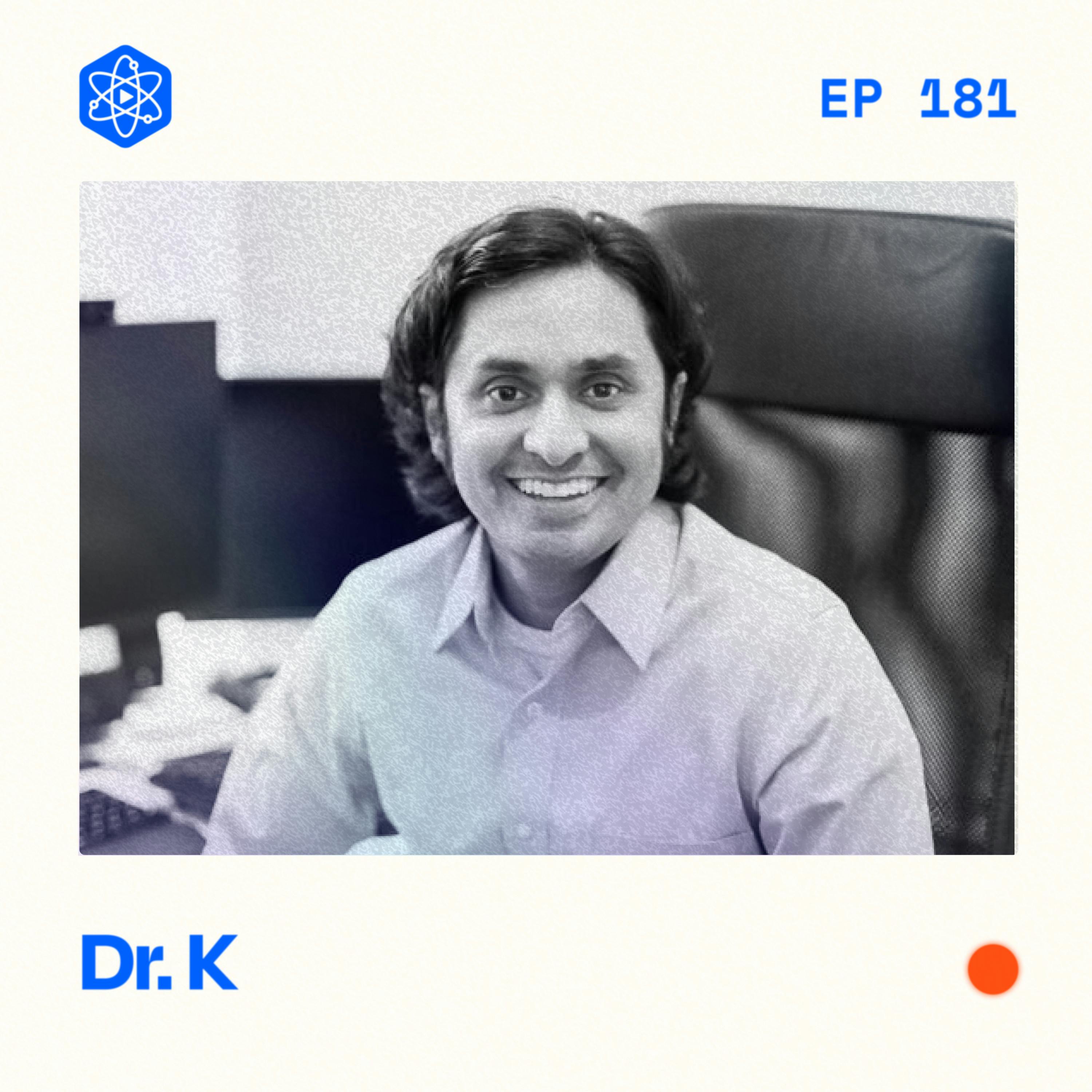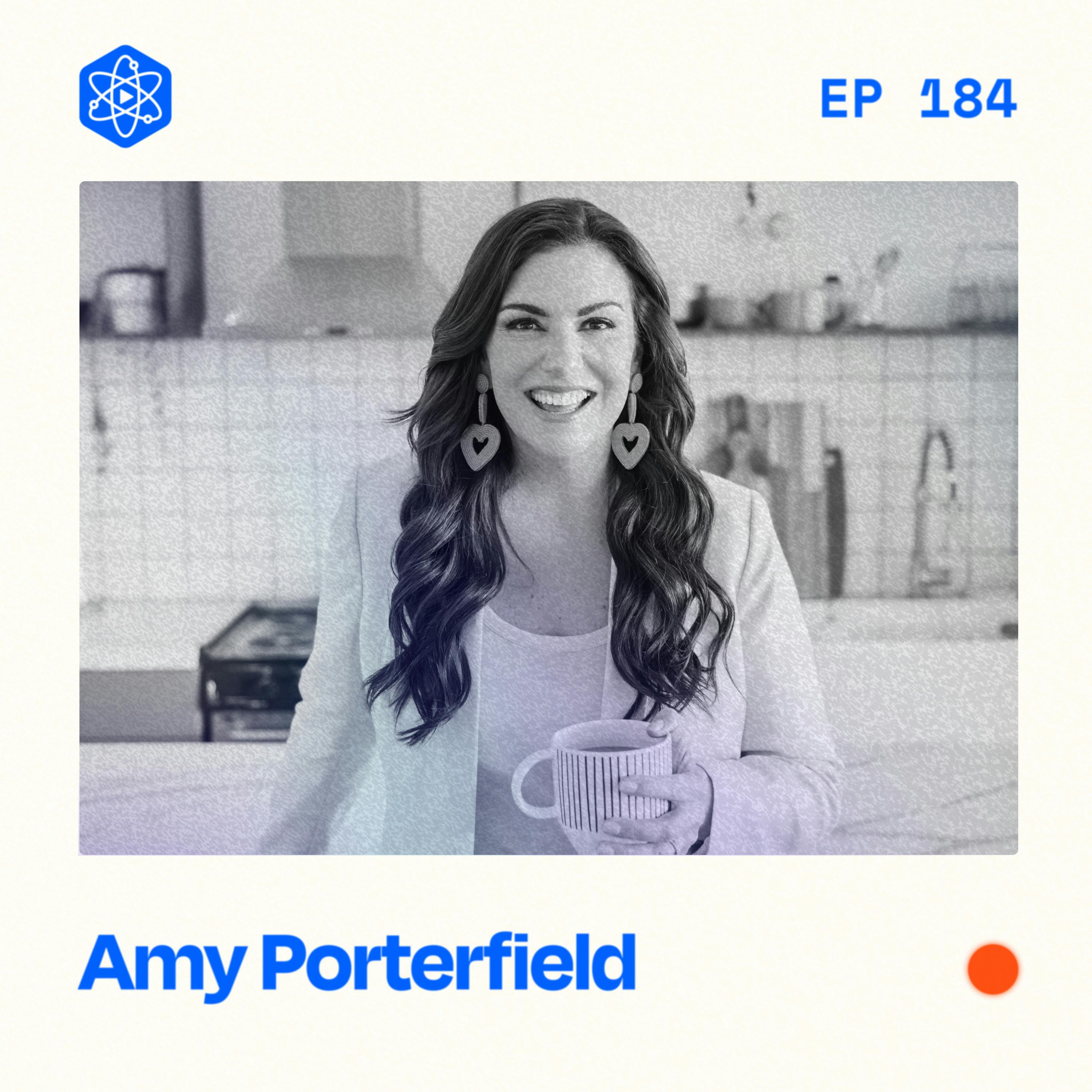We released our first-ever solo video on the channel yesterday. And so far, it's the most successful video on the channel yet.
WATCH
▶️ Watch this video on YouTube
***
EPISODE DESCRIPTION
We released our first-ever solo video on the channel yesterday. And, so far, it's the most successful video on the channel yet.
The video is called, “How I Made $300K in 2022 Without A Big Audience” and I break down the seven major revenue streams in my business. You can watch here it right now.
This is a big moment for the channel not just because it's the FIRST solo video on the channel, but because we actually plan to do a lot of solo videos on the channel this year. YouTube is a big area of focus for me this year, despite currently being my smallest channel.
So in this episode, I want to talk a little bit about our YouTube strategy and why I’m putting so much emphasis on it this year. Not only that, but I’ll share a little behind-the-scenes of making THIS video, what we learned, and how we’re approaching future videos as well.
Full transcript and show notes
***
RECOMMENDED NEXT EPISODE
→ What we've learned in our first year on YouTube
***
WHEN YOU'RE READY
🚀 Get CreatorHQ (creator operating system)
🧪 Join The Lab (private membership community)
***
CONNECT
***
SPONSORS
💼 View all sponsors and offers
***
SAY THANKS
Jay Clouse 00:14
Hello, my friend, I hope you've had a fantastic start to the year. It's hard to believe that we're already a month into 2023. And if things have started slow for you, don't worry, there's plenty of time to turn it around. Taking you a little bit behind the curtain here, I'm recording this on Sunday night ahead of a very exciting week. We are releasing our first ever solo video on the YouTube channel. In fact, as you're listening to this, that video has been released. And as of this recording, again Sunday night, I actually have no idea how well it will be received. Maybe it's the most successful video we've made so far. Maybe it's a total dud, we will soon find out. The video is called How I Made 300k in 2022 Without a Big Audience and I break down the seven major revenue streams in my creator business. You can watch it right now over on our YouTube channel. A link is in the show notes to help you get there. This is a big moment for the channel, not just because it's the first solo video on the channel but because we actually plan to do a lot of solo videos on the channel this year. YouTube is a big area of focus for me this year, despite currently being my smallest channel. Well, except TikTok but we won't talk about TikTok. One question you might be asking is, why is Jay suddenly putting so much effort into YouTube, and I'll be honest, I'm really really bullish on the opportunity of YouTube, I feel like I've underestimated it for a really long time, is he I thought the game on YouTube was get subscribers make videos, your subscribers will watch those videos. But now at least in today's YouTube, the algorithm plays much more of a role than just your subscribers. Actually, YouTube has gotten really, really good at surfacing new videos, even if the channel is really small to new viewers. So it doesn't depend on having a ton of subscribers to get a lot of views on YouTube. And if you can get a lot of views on YouTube without a lot of subscribers, you can actually then generate a lot of subscribers. Not only that, but YouTube is much bigger than I've ever imagined I'd really, really really underestimated it. And one thing you have to understand is that YouTube comes pre installed on every Android device on the planet. So it's just accessible to so many people and you might be hearing my new puppy Winnie upstairs barking, she has been a gift, a blessing, a lot of fun, and also a terrible impact on our sleep. So you're I am recording this video in the basement, she's upstairs barking, this might be my reality for a while, we'll find out but she's adorable. Her name is Winnie if you want to learn more about Winnie, you can follow our Instagram account at the Clouse hold on Instagram. My wife Mallory is running that. Anyway. So YouTube bigger than I ever imagined huge opportunity, I think gonna have a huge impact on the business not just this year, but long term. And so I want to invest more effort there. So in this episode, I want to talk a little bit about our YouTube strategy and why I'm putting so much emphasis on it this year. Not only that, but I'll share a little behind the scenes of making this video in particular, what we learned and how we're approaching future videos as well. So if you're getting started on YouTube, or considering getting started on YouTube, I think this will be pretty insightful. If you're really good at YouTube. Listen to this and let me know if I'm off the mark. Let me know what I'm doing wrong or if this doesn't make any sense. So first of all, why are we making solo videos? Well, we've learned a lot about YouTube in the eight ish months since we started. And I mean a lot. I'm investing a lot of time and learning about YouTube. I've talked with a lot of people who do this really well. I am in two YouTube specific courses right now one of them being creator, now, another being a small accelerator with Patti Galloway. So I'm learning a lot very, very quickly. And even though you'll hear a lot of people say that video podcasting is the next big thing on YouTube. I don't know that I totally buy it. I'm super excited about YouTube. And I'm really bullish about how important it might be to the business I have here, as you've heard me say, but I don't know that I believe the hype about video podcasts just yet. Most YouTube viewers don't seem to be looking for a 45 to 60 minute conversation with someone that they may or may not have heard of before. And the reality is, even a lot of the folks that I know really well in this creator world are not well known on YouTube. We've been really strongly incentivized to focus interviews on this show to only creators who are YouTubers because that performs much better on YouTube. The YouTube audience is more likely to recognize their name and therefore be more likely to care. This podcast historically in my entire business is not dedicated to one particular platform one particular medium I genuinely want to learn from all walks of creators because I think cross pollinating ideas across platforms across mediums, makes for a more compelling and interesting product, I think it is differentiated, it's definitely harder. But if we were to only do interviews on this show, we would over time be more and more incentivized to talk to just bigger and bigger YouTubers. And that's not what I want to do with the show. Historically, YouTube is built on shorter videos that are more targeted to a specific idea than a long form interview, at least that's my belief. And so I wanted to test that belief by investing more time, effort and resources into doing solo shorter form video, something that's more traditional, and more like what most YouTube videos are about what most YouTube viewers therefore like to watch. But that's not the only reason I'm focusing on more solo videos. After more than two years of nonstop interviews, I actually get a lot of listeners asking for more of me and my point of view, and I think it might be fun to do more solo video sharing what I've learned from these interviews, what I'm doing in my own business, and how it can impact you as a creator 2022 was a massive year for me, and I think that I have a lot that I can share with you. I really enjoy talking with guests on the show. But when I'm honest with myself, I don't aspire to be known as a professional interviewer. I'm more interested in creating content that shares my ideas or even sharing some of the in the weeds conversations that I have with other creators in real life about our businesses, a little less personal history a little less interviewee a little bit more conversational and a little more specific and problem solving. So for all those reasons, we're not just creating solo videos and solo episodes like this one, we're actually going to test a couple new formats on the podcast this year. Alright, so that's why we're doing more solo episodes, more solo videos on the show, let's talk about the process of making this video. In particular, in the process that we have for making videos. Generally, if you didn't know, I work with a video editor on the YouTube channel named Connor, he's fantastic. He's been amazing. And not only do I work with Connor on the channel, but I recently started working with another guy named Adam, who has been helping us do some of our video research. So despite not having made a solo video like this before, we have a pretty legitimate process for getting this done. Some of this is easier to see visually, but I'm going to try to describe it as best as I can in audio. Over the last few months, I've really built out a powerful notion database for my entire business, but especially my content planning, I have a database of all content types, my newsletter, the podcast, each social platform in YouTube, each platform has its own view in the database, and it can be seen in a Kanban board. So imagine looking at a Kanban board kind of like Trello or Asana where there are different columns left to right, left to right goes along a process of an idea to full completion, each platform can be viewed that way to show an idea for each platform, and where it is in the production process. So the far left column is an idea the far right column is published. And we follow the production process of every piece of content through like that. And by the way, if you want to see what this looks like, this is something that I document and share inside the lab, my membership community. So another perk to join the lab and be a member there. I do a lot of these over my shoulder videos where I show you exactly how my processes work so that you can build them or implement them yourself little plug there. But visit creator science.com/lab If you'd like to become a member. So each week, Connor, Adam and I have a standing call to discuss upcoming ideas for the channel throughout the week at any time any one of us can go into that notion database and add a card for different ideas for the channel and they sit there in that ideas column. We meet once a week and we debate which idea sounds like fun and feels like it has the potential for views and move that into the committed column. Something else we added this week is actually looking at the lens of what is the scope of the different types of videos that we want to make for the channel, what is outside the scope of what we would typically share? Or who are we targeting, we're getting better and better at looking at each video idea, the scope of does this fit in the Creator science landscape. And I think that's really positive. I'll probably do another episode on that in the future. So once we've come to a consensus on okay, this idea fits within our scope. We think it's interesting, we think that it'd be fun to work on, we move it into the next column in the database, which is committed meaning we've committed this idea, it's time to start building it. From there, Adam actually spends about a week looking at similar videos on YouTube. He adds his research to notion to that card we moved over to committed including each of the thumbnails of those videos he's watching. So by the end of the week, we have a research document for that idea that has competitive videos, how they performed when they were published, what their titles are and what their thumbnails looked like as well. With that research. We meet the next week again in a I agree on the overall package of the video. Now this is a major thing that I've learned about YouTube, everything comes down to packaging. Packaging means how you showcase your idea and make it something that is both worth clicking on. And something worth watching. This is a really important concept to grasp. So let me take a little bit of time here and explain what I mean. On the podcast, I've always depended on your trust in me that even if you didn't know who a guest was, you would trust me, you would trust my taste and therefore be willing to listen. In audio. That's pretty much true people only subscribed your podcast if they trust you. And because discoverability is basically non existent. Only subscribers see your new episodes and therefore listen to them. On YouTube, the entire point is to be discovered by new viewers with every video that you publish. That's why I'm so bullish on YouTube. That's why I'm putting so much time and effort into it this year. And like I said earlier, YouTube is a really good at surfacing your video to new viewers all the time. But new viewers are shown multiple different video options at all times on the homepage and recommended at the end of videos. Your video is rarely alone as a recommended video. So why would the new viewer choose your video to watch a total stranger? Why would they click on your video versus the other videos that are competing for their attention? Well, that all comes down to your packaging how you make your idea compelling. That basically means that your title and thumbnail needs to be something that makes someone wants to click on your video versus click on another video or leave YouTube altogether. If YouTube shows your video to new viewers, and none of them are clicking on it. You have a low CTR click through rate. If you have a low click through rate, you're going to stop getting recommended at some point because YouTube wants to keep viewers on the platform. If your video is not engaging viewers from that clicking on your title and thumbnail watching your video, you're not helping YouTube with their goal. YouTube thinks your video is not good. If this is sounding some alarms for you or getting your wheels turning, I recommend you listen to my episodes with Jake Thomas, where we talk about titles on YouTube, Thomas Frank where we talk about the algorithm or Hayden Hillier Smith, where we talk about packaging even more in depth. All this to say packaging is really important. And that's what makes video interviews so hard. Because in these interviews in these conversations, we cover so many different topics, we have so much time together, we cover so much ground, it's really hard to package a full conversation into one compelling title or thumbnail. Unless again, the guest is someone who is well known on YouTube. That's why it's so easy to interview a YouTuber because all you need is to piggyback on their credibility and their reputation on YouTube itself. Most people in this position they'll basically just take one talking point from the interview and they'll title and thumbnail that video based on that one talking point. If you want a good example of this, look at the my first million YouTube channel their videos, they typically just pull out one major talking point and make that the package that's hard for me to do we cover so much ground in an interview. It's just tough. But otherwise, it's really hard to get someone to click on a long form video interview with someone they don't already know. And like. Alright, I've been progressing for a little bit. Once we agree on the package for this video, I will get to work scripting the video, I script it inside of notion in that same document we've been collaborating on, I'll write out the script, I'll let Adam and Connor know that it's there. We collaborate on it, they comment on it, and I kind of finish writing it and we're all happy. So then I go into recording mode, then I'll drop that script into a tool called prompt smart Pro that has an app, I use an iPad with my teleprompter and I use this prompt smart pro app. The really cool thing about it is it actually listens to your voice as long as you're close enough for it to hear you. And it will move or scroll what's on screen on your teleprompter based on what you say. So you don't have to keep up with a certain speed. It's actually reacting to you versus vice versa. So I record my raw video, I upload it to Dropbox and I let Conor know so he gets into editing mode. By this time, we've had a discussion in one of these meetings already where we agreed along with the package what we want the thumbnail to look like Connor runs point on collaborating with a thumbnail artist. And basically at this point when Connor is editing I can get started on the next video Adams probably researching it, it's probably time for me to start scripting it. That is the process. Once the video has a first pass on editing from Connor. I'll watch it over I'll make some notes and we'll finalize it. That means that we have a video we have a finished thumbnail we have a title we've agreed upon. We are ready to publish and As of recording this episode right now, that's exactly where we are with this first episode. Everything's ready to go. It's uploaded to YouTube, ready to publish. Probably need to spend some time on the description, but it's ready to go. We're gonna take a quick break for our sponsors here but after that I'm going to share what I think went well with this process, what I can improve upon. And a couple other takeaways. So stick around. We'll be right back. Welcome back. Let's talk about what went well with this process in with this video. I'm actually really happy with how it came out. I thought initially that I had scripted what would become a 20 to 30 minute video, a lot of the videos that I watched in research of other creators were 20 to even 40 minutes, I thought I had a 20 to 30 minute video breaking down my income streams. But after the final edit, it actually came out to be just under 11 minutes, which was much shorter than I expected. Just as a quick aside here, I was binge watching that 90 show on Netflix this past week with Mallory and I noticed that each episode is about 22 minutes long, which felt short. It's actually kind of funny, like I'm sure they were looking at the older that 70 show episodes, which were also about 22 minutes long, because they're on network TV, which had eight minutes of commercials on Netflix, there's no commercials, they didn't need to be 22 minutes long, but they kind of kept with the format. Anyway, it's kind of crazy, just how much content 22 minutes actually is, when you script something to be the essential information and not a lot of filler. A 22 minute script is a lot of words. And it's a lot of speaking, I think the packaging of this video is really smart. Again, as I'm recording this, I actually have no idea how this video will perform. But we package this to be counter to a lot of the other income stream videos that are popular on YouTube right now we looked at a lot of these, here are the X number of revenue streams in my business, or here's how I earned this much money per month. There's a lot of those on YouTube. And I wanted to showcase to viewers how I earned a lot of revenue last year without a YouTube audience. A lot of the videos you see like this not only have the punch line of and most of my income comes from YouTube, Adsense or brand deals or sponsorships or even just selling to this massive YouTube audience I have. Some of them even talk about real estate income or other forms of investment. This video is none of that I wanted this video to be accessible to the viewer, I wanted them to see oh, this person is more like me, the distance between me and this guy is much smaller than the distance between me and Ali a doll or something like that. I want them to see that you can earn really great revenue with a much smaller audience than most of the youtubers that they see. I also really enjoyed the collaborative process of making this video talking with Connor and Adam about packaging was really fun, I think ultimately led to a much better product. And this is kind of a breakthrough for me to be honest, because for a long time, I didn't aspire to work with other people in my business, I didn't want to give up control, I didn't think it would make a better product. I didn't want to manage people. But this has been such a wonderful, pleasant, easy process, that it actually has me excited about the prospect of growing my Creator business to work with more members of a team. So that's what went well. That's not to say everything went perfectly though there were some things that I can really improve upon, too. Namely, the teleprompter that I use for this video, there are times when it's really clear from the video that I'm reading, or maybe over performing. It's a new medium for me to be on video on YouTube in particular. A few years ago, I was making courses, a couple of courses per year with LinkedIn learning for the LinkedIn platform. And I was trained by their team how to deliver to a teleprompter. But that style of delivery, that style of teaching is a little bit different than the vibe you want for YouTube.
Jay Clouse 18:37
So this video, it has, at times kind of a feel of doing a LinkedIn learning course, which I don't love. The vibe on YouTube is different. You want it to be more casual, you want to be less performative, you want it to be more friendly. So for future videos, I'm trying to decide if I want to just get better at using a teleprompter because there are times where the problem is you just see my eyes moving, maybe I'm not overperforming. But because I didn't memorize this, and I'm reading from a teleprompter, you can see my eyes moving. So I can get better with the teleprompter if I want to do that. But maybe a change the process for creating videos, maybe I don't use a teleprompter at all. Or maybe I use a teleprompter with bullet points instead of reading a full script. I also want the team to get further ahead on these videos. Since this was a new process and you heard all the steps in it. It took us all a little bit longer to get into the groove than we want to in a typical video. You know, we prefer to build a turn something like this around like a 12 minute video much faster. But we're all learning apps from scratch. We're building new libraries of B roll and audio and the things that we want to pull in. It's a brand new process. So it's always going to be slow in the beginning you're gonna get better at it. But I want to get further ahead on these so we can do more involved ideas over weeks at a time. Suddenly we'll be talking about a lot if you're subscribed to my newsletter creator science right now. I am running an experiment in public so that all through February, I'm sharing with that list, how I'm actually planning to grow. That newsletter I'm literally experimenting with how do I grow this newsletter and sharing the results there in public. That same idea can make for a really great YouTube video. But ideally, I don't just do the experiment and talk about the results at the end of the video, I actually take video all throughout that period of time. So you watch and see my real time reactions over time in a final video. To do that level of production, you need to be ahead of the process. So you can plan and kind of parallel process multiple videos at a time. So time management, project management, getting ahead, that's something we want to do better, our weekly calls are a really good addition, because we make a lot of progress. During those calls, we answer a lot of questions. And we're held accountable to getting things done, so we can talk about it in our next call. All right, I want to wrap up with some final takeaways here. I do think that this is going to be a big part of my overall business this year. Now, in 2022, the YouTube channel was probably my single greatest expense in the business and we just started generating revenue from AdSense in December. So it was a huge cost in 2022, to get things rolling and, and get to this point. And I'm hoping that this year, by the end of the year, we're close to breaking even which would probably require some sponsorships on the channel itself. But I do think it's gonna be a big part of the overall business, whether it's directly financially this year, or just enjoying the audience and, and helping get people into the newsletter. I think it's gonna be big. The channel has just under 3000 subscribers at the time of this recording, which feels very small relative to downloads of the show, or newsletter subscribers or my social media following, but I think YouTube is a compounding game, as we grow, I think will grow faster and faster. And when people do find the channel, we get a lot of feedback and comments about how viewers can't believe we don't have more subscribers yet they say this channel is gonna blow up, this is going to be huge. So we feel really, really good about the quality of the work we're putting out. It just takes time when you start from zero, it just takes time. I think I'll cut it there. I think that's enough for this week. If you do want to follow along with that experiment and growing my newsletter, just go to creator science.com and subscribe. We're just getting started. So you'll see all of that. I think you should be subscribed to it anyway, I think you'll learn a lot from it. My goal is to help you become a smarter creator and 10 minutes or less per week. So again, go to creatorscience.com Get on the newsletter if you're not there already. I do enjoy making these solo videos and even this solo audio episode, I feel a very close relationship to audio listeners of the show. I generally feel like I've been speaking to a friend this whole time recording this episode is a different type of energy than recording an intergroup. So I hope you enjoy these solo episodes to let me know what you think if you do enjoy them both in regards of the solo audio episode, but the new video on the channel as well. Again, the link to that video is in the show notes here. Just go to your player, go to this episode. Watch the video on YouTube. Let me know what you think. You can tweet at me, you can tag me on Instagram, you can send me an email, whatever is easiest for you. I want to hear what you think about the solo episodes of this audio show and also the new video on YouTube. Thanks for listening. Thank you for watching. Thank you for being you. I'll talk to you again soon.








